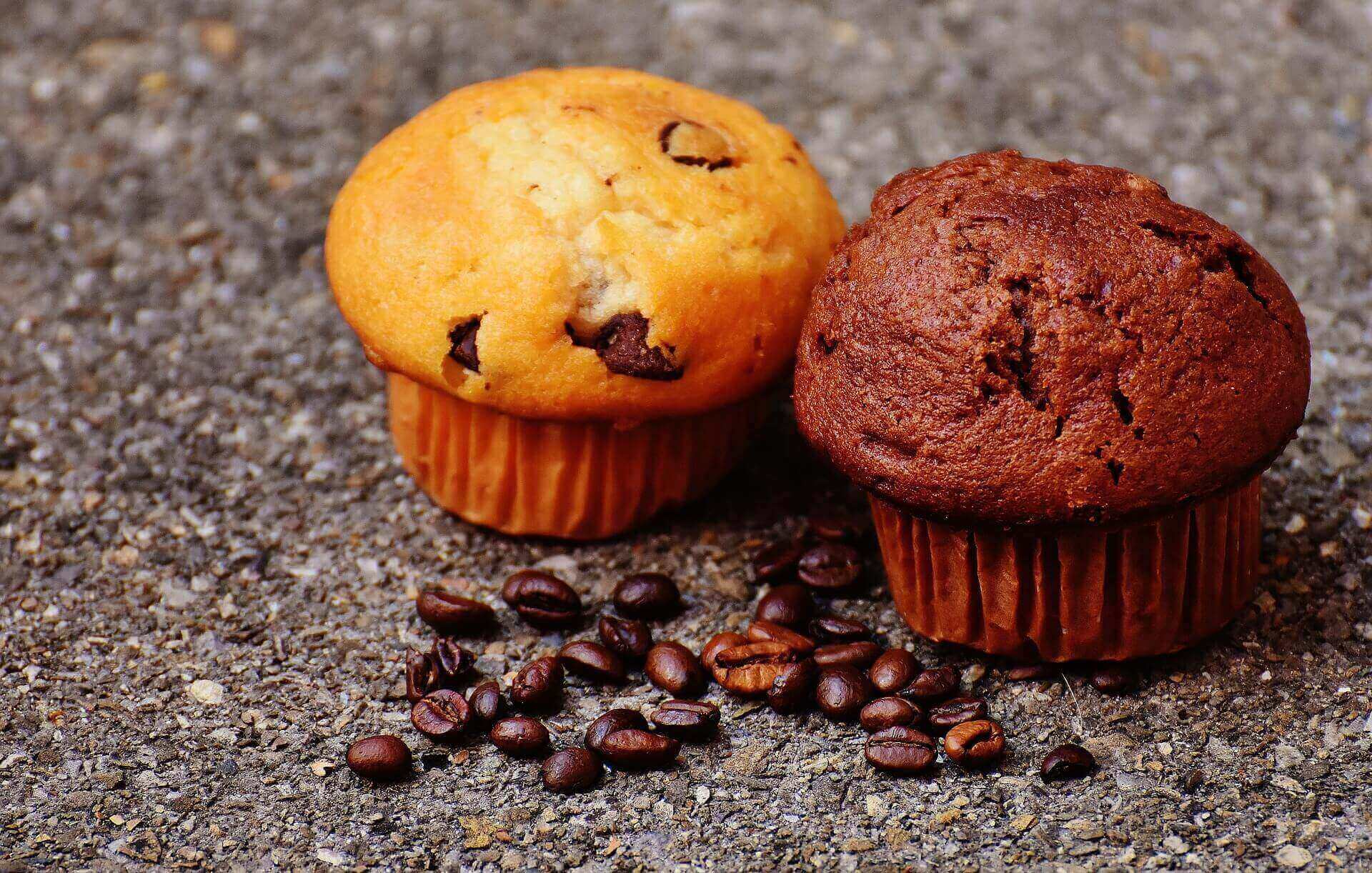Description
A muffin is an individual-sized, baked quick bread product.
Muffins in the United States are similar to cupcakes in size and cooking methods, the main difference being that cupcakes tend to be sweet desserts using cake batter and which are often topped with sugar frosting. Muffins are available in both savory varieties, such as cornmeal and cheese muffins, or sweet varieties such as blueberry, chocolate chip, lemon or banana flavours. Muffins are often eaten as a breakfast food. Coffee may be served to accompany muffins. Fresh baked muffins are sold by bakeries, donut shops and some fast food restaurants and coffeehouses. Factory baked muffins are sold at grocery stores and convenience stores and they are also served in some coffee shops and cafeterias.
Outside the United Kingdom, an English muffin is a flatter disk-shaped, typically unsweetened bread of English origin. These muffins are popular in Commonwealth countries and the United States. English muffins are often served toasted for breakfast. English muffins may be served with butter or margarine. English muffins may be topped with sweet toppings, such as jam or honey, or savoury toppings (e.g., round sausage, cooked egg, cheese or bacon). English muffins are typically eaten as a breakfast food.
Recipes for quick bread muffins are common in 19th-century American cookbooks.Recipes for yeast-based muffins, which were sometimes called “common muffins” or “wheat muffins” in 19th-century American cookbooks, can be found in much older cookbooks. In her Boston Cooking-School Cook Book, Fannie Farmer gave recipes for both types of muffins, both those that used yeast to raise the dough and those that used a quick bread method, using muffin rings to shape the English muffins. Farmer indicated that stove top “baking”, as is done with yeast dough, was a useful method when baking in an oven was not practical.
The English muffin is a type of yeast-leavened bread; generally about 4 in (10 cm) round and 1.5 in (3.8 cm) tall. Rather than being oven-baked, they are cooked in a griddle on the stove top and flipped from side-to-side, which results in their typical flattened shape rather than the rounded top seen in baked rolls or cake-type muffins. The type of English muffin sold today was popularised in the late 1800s by English-American baker Samuel Beth Thomas (whose baked-goods company Thomas’ survives to this day).
The name is first found in print in 1703, spelled moofin; it is of uncertain origin but possibly derived from the Low German Muffen, the plural of Muffe meaning a small cake, or possibly with some connection to the Old French moufflet meaning soft as said of bread.
Muffin tins and muffin pans are typically metal bakeware which has round bowl-shaped depressions into which muffin batter is poured. Muffin tins or pans can be greased with butter or cooking spray, to lessen the issue of batter sticking to the pan. Alternatively, muffin cups or cases are used. Cups or cases are usually round sheets of paper, foil, or silicone with scallop-pressed edges, giving the muffin a round cup shape. They are used in the baking of muffins to line the bottoms of muffin tins, to facilitate the easy removal of the finished muffin from the tin. The advantage to cooks is easier removal and cleanup, more precise form, and moister muffins; however, using them will prevent a crust from forming.


Reviews
There are no reviews yet.